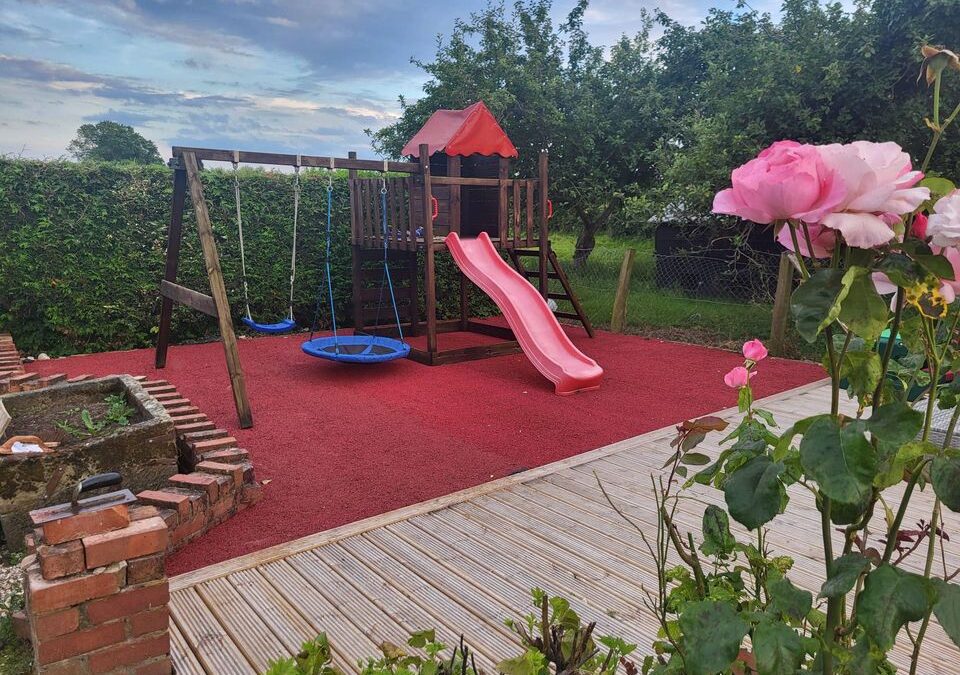Whether you’re building a play area at home, or in a public place such as a community or school park, you’ll want to make sure that the play area surface is safe.

Some things to consider:
- The age group of the children using the playground; younger children typically fall more, so need a softer, spongier surface.
- Longevity and maintenance; whichever playground surface option you ultimately choose, you’ll want to get the most for your money by taking care of it
- Budget; getting some quotes for the square footage of your playground will help you narrow down your choices.
Rubber playground mulch
The safest option on the market, rubber mulch is an economical option for your playground that doesn’t compress, compact or decompose like other options in this list. According to the ASTM international, for a playground height of 10 feet, you would need 6 inches in depth to prevent a critical fall, much less material than wood mulch, pea gravel or sand.
Another benefit of using rubber mulch, is that as long as you keep the mulch within the playground boundaries, it doesn’t need replenishing as much as other options. At Rubber Professional Surfaces we have a range of play area mulch from our standard play chippings to our premium play chippings and coloured play chippings.
Playground wood mulch
One of the most commonly used materials for playground flooring, playground wood mulch is made from a mixture of soft and hard wood. It looks very similar to landscaping wood mulch, but is better at preventing injury. The ASTM states you need 12 inches of playground wood mulch for a playground height of 10 feet. So whilst it may be cheaper to buy per bag than rubber mulch, you will need twice as much, so it’s worth working out the cost to surface the whole area before committing.
Regular wood mulch
Usually used in flower beds, regular wood mulch can also be used as a playground surface. But, whilst this is a pretty inexpensive option, we wouldn’t consider it an ideal surface option; it’s usually dirty, especially when new, it’s often treated with chromated copper arsenate, as well as chemical pesticides or herbicides, and they’re rife with splinters.
The other downside to this material is that it needs to be replenished every year, so whilst it might be cheaper initially, it won’t be in the long run. If you do decide to opt for regular wood mulch, you’ll need 12 inches of mulch for a playground height of 7 feet.
Wet pour
A rubber surface that provides a high quality, long-lasting, slip resistant surface with little to no maintenance. Advantages of wet pour include being able to create a wide variety of designs, and it’s easy to repair if damage occurs.
Pea gravel
A far less common choice of material in today’s playground world, and not the softest for falls, pea gravel is the second cheapest choice for a playground surface. You’ll need 12 inches of gravel for a playground height of 5 feet.
Sand
As the cheapest option in our list, it’s also the least cushioning on any falls, you’ll need 12 inches for a playground height of just 4 feet.
At Rubber Professional Surfaces we have a wide range of rubber chippings and wet pour options available, simply get in touch with the team today.
